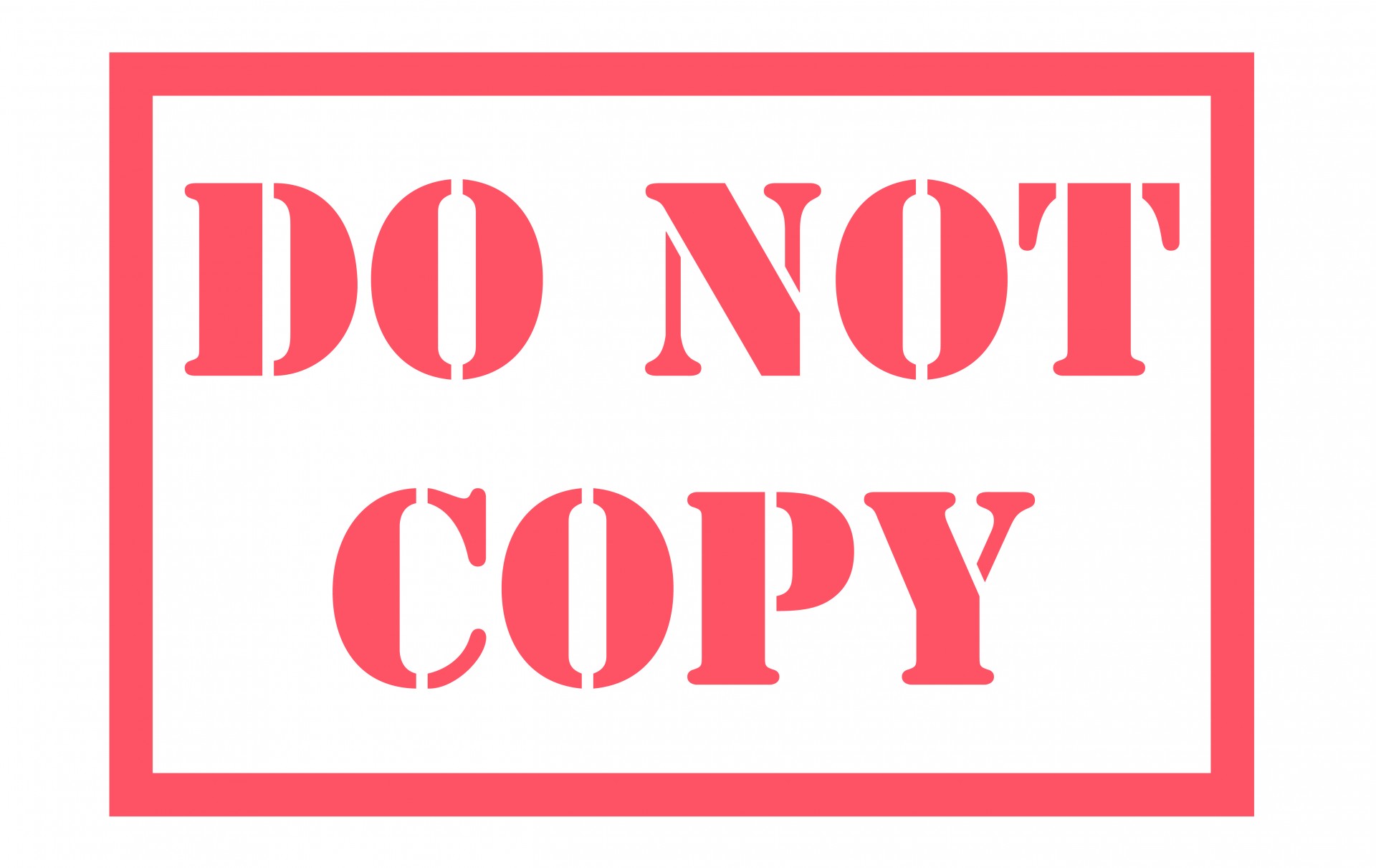
It’s a lousy thing to do and have done to you – particularly if you’re freelance, where reputation matters so much. However, what can you actually do when someone effectively steals your hard work?
Below, we’ll look closely at six great ideas to help you deal with intellectual property thieves (without resorting to anything that will land you in trouble!). Let’s get started!
1. Assess the Damage
Whenever someone has copied your work or idea, the first thing you need to do is work out exactly how much damage the theft has caused.
The basic question you need to ask is whether the theft is of something fundamental to what you offer, or something peripheral. Take a few days to analyze the damage, because initial outrage can sometimes cloud your judgement.
To help you to do this, take a look at the IP Commission report on American intellectual property theft. You should estimate the time (and cost) involved in creating the original, plus any ongoing damage to your reputation and loss of work.
Bear in mind that with issues such as machine-generated spam blogs, which are typically run by copyists in countries with very different laws on using fake identities, there may be little (or no) concrete action you can take.
2. Contact the Copier
If it’s possible to communicate with the person or company that stole your idea, it’s worth getting in touch to point out that their product or service is an exact replica of what you’re offering, and ask them why they’ve done this.
You could see this as cathartic, but be careful to keep your temper. Your message should let them know that you have seen and understood what they’ve done, and leave the door open for potential future action. If you’re nervous about contacting them, find yourself a good guide for dealing with plagiarists.
You may get a response (which might well be an outright denial), but could shed some light on what’s happened. You may discover that the two products or services aren’t as similar as you thought, or that your rival came up with the same idea independently (and can explain their thought process to back this up).
3. Improve On the Original
Looking forward, how can you go about dealing with the theft? Assuming you don’t want (or have the ability) to take the offender to court, the obvious option is to find ways to improve on what’s been stolen.
Bear in mind that you’re the one who had the good idea in the first place, and the thief is so short of inspiration that they’ve had to steal it! This puts you ahead of the game.
Yes, it requires some brainstorming – starting with a basic analysis of what you were doing, and finding ways to improve it (with the help of customer feedback and some market research). Try making a ‘mind map‘ to create connections you might not have considered.
Ultimately, you’ll be offering your clients something better than your copycat, which should give you a nice warm feeling and fresh content to boot!
4. Guard Your Good Ideas
There is an obvious further conclusion, which is that you need to protect your good ideas (where possible).
Branding is one way of guarding your work – associate your name closely and publicly with the product or service you’re providing, so that it’s obvious to others if someone steals your work. If you also work hard to associate yourself and your work with quality (and other positive attributes), you can retain a competitive advantage.
Taking note of the time frame is also important. For example, if you’re a writer and you publish an article, the date of publication provides you with evidence that you are the originator of that text. Likewise, for any other product or service, get solid proof of when you began producing or offering it.
Additionally, be very careful when you discuss your plans. If you’ve got a good idea, don’t explain it in detail to others. Even clients only need general information, not full data on processes.
5. File a Patent
If your business is based on an invention, and it’s critical to your success that you retain sole ownership of the process, you could consider filing a patent. It really isn’t a cheap option, but it prevents others from “making, using, offering for sale, or selling” your brainchild. To obtain a patent, your invention has to be “novel” and “non-obvious”.
How much will a patent cost? The IPWatchdog website goes into a lot of detail. If you’re a “small entity” (which most inventors are) the basic filing fee is $730, and if you’re a “micro-entity” the fee is $400. Professional drawings (which you’ll likely need) add another $300–$500, and attorney fees add another few thousand dollars depending on the complexity of the idea.
If your business is based on intellectual works such as writing, art, or photography you can protect them with copyright. This protects the “form of expression rather than the subject matter”, as the US Patent and Trademark Office explains in its helpful guidance.
Copyrighting is considerably cheaper than patenting, as the US Copyright Office website shows, and in fact any original work is automatically copyrighted by law. However, registration is recommended and considered as “prima facie” evidence (sufficient to prove your case) in a court of law. The Copyright Office FAQs provides further in-depth information if you need it.
Finally, if there is a particular image, word, or phrase associated with your work you can register them as a trademark (as McDonald’s did with “I’m Lovin’ It”). The USPTO guidance shows a range of $225– $325 to protect a trademark.
6. Take Legal Action
You may think that legal action is the only way forward when someone has copied your work. However, you must take time to think it through, as going to court is an expensive option. It will only be worthwhile if you, your product or service, or your career have suffered significant damage that can be proven to have been caused by the copier. Also, remember that (as explained) you have to register your work in the US before you can commence legal proceedings.
There’s plenty of information available on what copyright is, what you can do, and the sorts of issues you might face (including things such as fan art and derivative works, which are messy areas when it comes to copyright).
If you estimate that your loss is small (and you’re absolutely sure the case is watertight) you could take your case to the small claims court, as doing so is relatively inexpensive. Each state has its own court system, but you can look at the California court information for an idea of how this works.
Conclusion
Discovering you’re a victim of plagiarism can be devastating, especially if you’ve worked long and hard to produce something of quality. It’s even worse if your reputation could suffer as a result of the theft.
When someone copies your work, there are various potential ways to resolve the problem and thwart idea thieves in future. Here are the basic steps you can take:
- Assess the damage to your business.
- Contact the plagiarist.
- Improve on the original work.
- Guard your good ideas.
- File a patent or copyright.
- Take legal action.
Have you had any problems with someone stealing your ideas, and how did you resolve them? Let us know in the comments section below!
Image credit: PublicDomainPictures.net.

